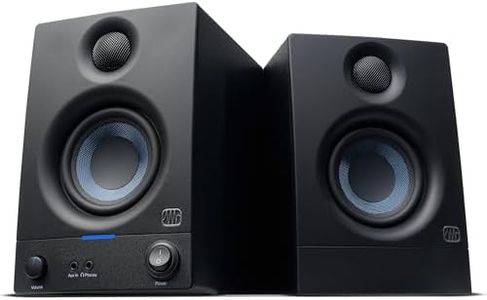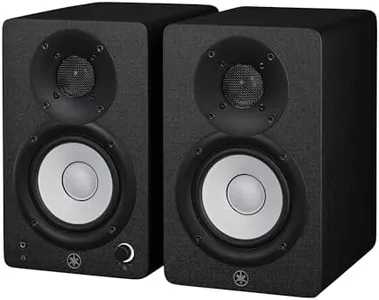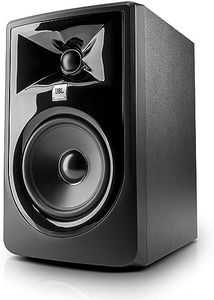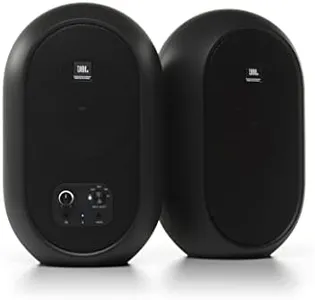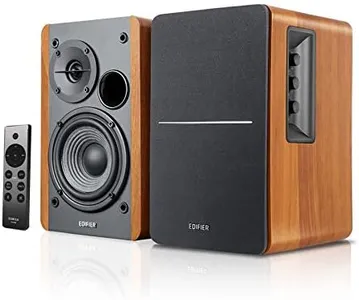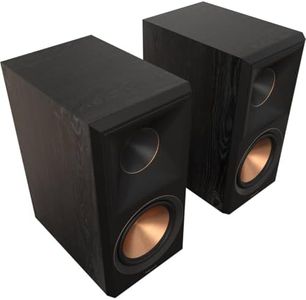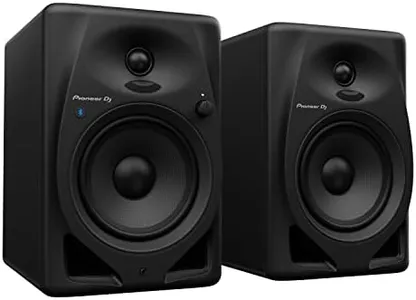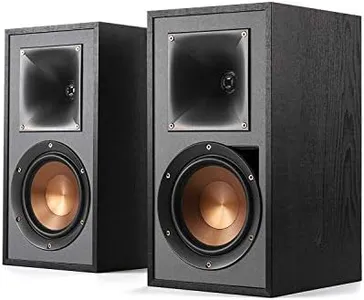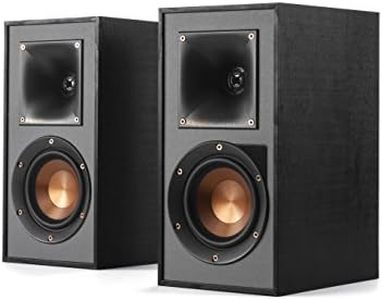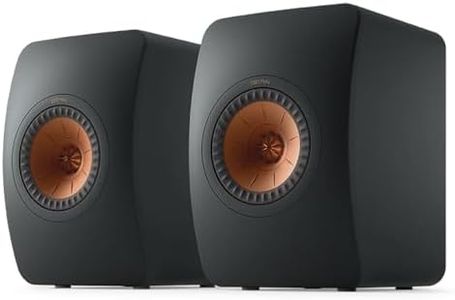10 Best Bookshelf Speakers 2025 in the United States
Our technology thoroughly searches through the online shopping world, reviewing hundreds of sites. We then process and analyze this information, updating in real-time to bring you the latest top-rated products. This way, you always get the best and most current options available.

Our Top Picks
Winner
PreSonus Eris 3.5 Studio Monitors, Pair — Powered, Active Monitor Speakers for Near Field Music Production, Desktop Computer, Hi-Fi Audio
Most important from
847 reviews
The PreSonus Eris 3.5 Studio Monitors are a solid choice for anyone looking for compact bookshelf speakers that excel in delivering accurate sound for music production, gaming, or casual listening. One of their strengths is the clarity and quality of audio they produce. Thanks to their 3.5-inch woven-composite woofers, the speakers can deliver a surprisingly rich low end, making your music or media feel full and immersive. The 1-inch silk-dome tweeters also provide excellent high-frequency response, ensuring a balanced sound across different types of audio.
These speakers are designed with versatility in mind. With a total output of 50 Watts, they can fill a room without losing clarity. Plus, they feature various input options, including ¼-inch TRS and RCA, as well as a front-panel aux input for easy connection to devices like smartphones. The high- and low-frequency tuning controls allow you to adjust the sound to fit your specific space, which is an excellent feature for tailoring the audio experience to your needs.
However, there are a few drawbacks. While they are compact and powerful for their size, the 3.5-inch woofers may not satisfy those looking for deep, booming bass compared to larger speakers or dedicated subwoofers. Additionally, while the power-saving mode is a nice touch, some users might find the speakers need to be reset after inactivity, which could be an inconvenience. These monitors serve as an excellent entry point for users wanting high fidelity in a compact design.
Most important from
847 reviews
Yamaha HS4 Powered Studio Monitor in Black, Pair (HS4 B)
Most important from
97 reviews
The Yamaha HS4 Powered Studio Monitor is designed to provide accurate sound reproduction, making it a solid choice for those seeking bookshelf speakers primarily for music production or studio monitoring. With a frequency response range of 60 Hz to 22 kHz, it captures the essential low and high frequencies, ensuring detailed sound playback. Its 4.5-inch cone woofer and 1-inch dome tweeter work well together to deliver a balanced audio experience, making it suitable for various genres of music and content creation.
One of the standout features is the room control and high trim response controls, allowing users to adjust the sound output based on their room's acoustics. This adaptability can enhance the listening experience, especially in different environments.
The HS4 is not without its drawbacks. The power output is 26 watts per speaker, which may not be sufficient for larger spaces or for those looking for a more powerful sound. The size of the woofer (4.5 inches) may also limit the bass response compared to larger models, which could disappoint bass enthusiasts. Additionally, the design is more tailored for professional use rather than casual home listening, meaning it may not suit everyone’s taste if you’re simply looking for speakers for general music enjoyment. Given its features, the HS4 is an excellent choice for aspiring musicians, audio engineers, or anyone serious about sound quality.
Most important from
97 reviews
JBL Professional 305PMkII 5-Inch 2-Way Powered, Active Monitor Speaker for Near Field Music Production, Studio Monitor, Desktop Computer, Hi-Fi Audio. Sold Individually, Black
The JBL Professional 305PMkII is a versatile 5-inch 2-way powered monitor speaker, ideal for near-field music production and studio monitoring. It boasts next-generation JBL transducers, ensuring optimized damping for better transient response and deep bass with lower distortion. The new Boundary EQ feature helps maintain a neutral low-frequency response, even when placed on desks or near walls, enhancing its adaptability in varied setups.
A sleek and modern design not only adds to the aesthetic appeal but also includes a broad sweet spot for consistent frequency response, making it user-friendly even when listening off-axis. With a frequency response starting at 49 Hz, it delivers clear audio quality suitable for detailed audio work. The speaker is powered at 82 watts, offering robust performance for its size. It also includes practical features like a power cord, quick setup guide, and peel-off rubber pads for easy installation.
However, it is important to note that this model is sold individually, not as a pair, which might be a consideration for budget-conscious buyers. Additionally, it lacks wireless connectivity options, relying solely on wired connections, which could limit flexibility in some setups. Despite these minor drawbacks, the JBL 305PMkII stands out as a reliable and high-quality choice for those in need of precise audio monitoring, particularly in studio environments.


